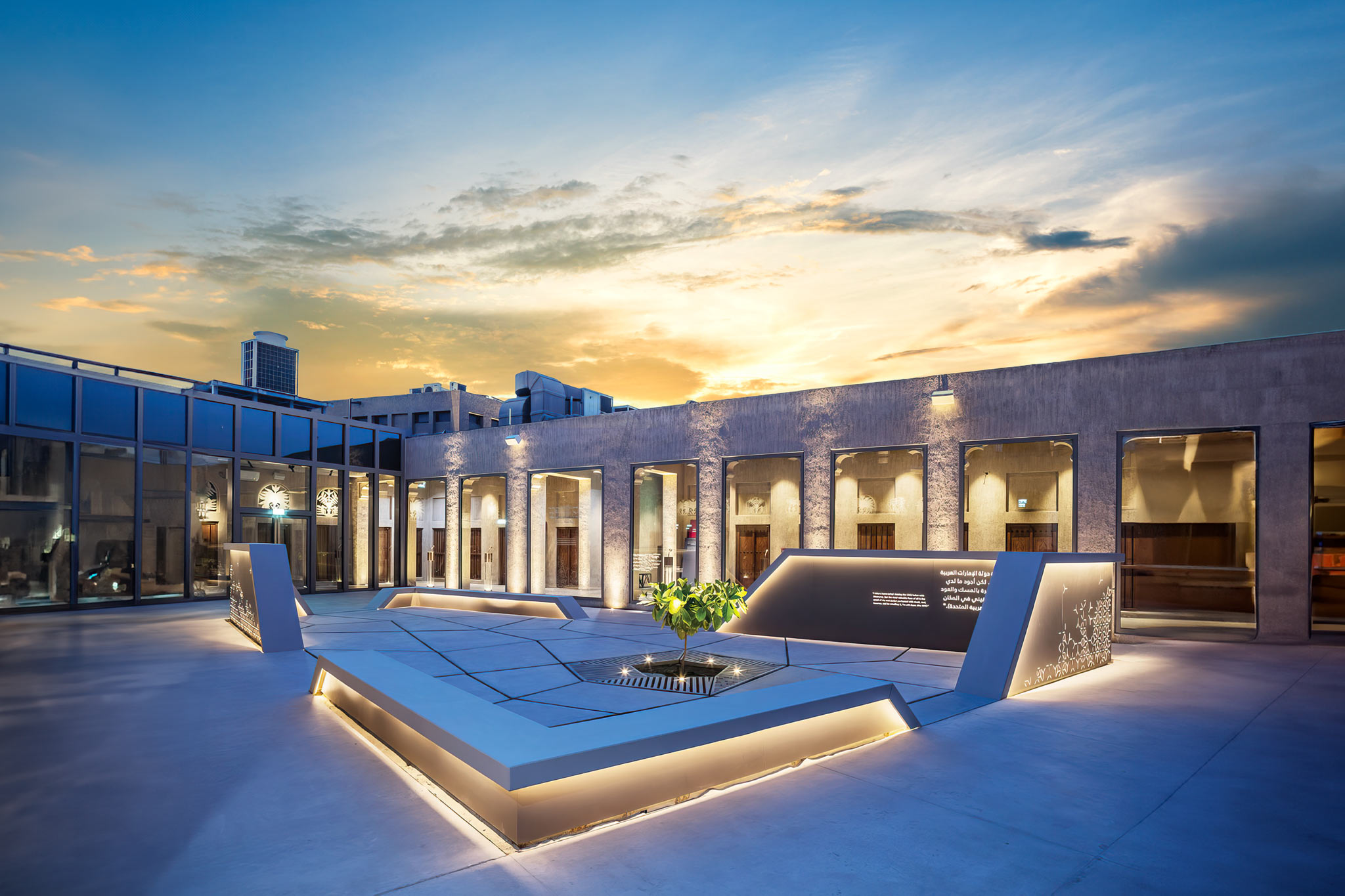
5 minute read
Al Shindagha Museum Hosts the International Council of Museums General Conference in 2025
Al Shindagha Museum Hosts the International Council of Museums General Conference in 2025
Located along the historically significant Dubai Creek, the Al Shindagha Museum, a multi-building village, tells the story of Dubai’s past and traditions. The museum’s multimedia exhibition ‘Dubai Creek: Birth of a City’ uses the latest technology to experience the region’s dramatic development over the centuries.
The exhibition uses interactive videos, touch screens, photos and old artefacts to show how Emirati families lived along the waterfront and how maritime trade affected their livelihoods.
Al Shindagha is one of Dubai’s oldest neighbourhoods, currently undergoing a welcome revival. Visitors who venture off the beaten track can discover several historical gems, including the official residence of Sheikh Saeed Al Maktoum, built in 1896. Saeed Al Maktoum was a former ruler of Dubai and the grandfather of the current ruler.
It is also home to the Al Shindagha Museum, where you can learn details about the city’s past as a maritime city. The Sarug Al-Hadid Archaeological Museum displays Iron Age artefacts recently found during an excavation in the Dubai desert. Several other museums and cultural experiences await around every corner in the district, so take your time to explore this different part of the city.
The Perfume House is in the former house of Sheikh Rashid’s sister, Sheika Shaikha. A prolific perfumer, she would create scents, bury them in her private courtyard for fermentation and preserve them beneath her bed. We spent hours here and felt like aspiring professional perfumers the more scents we got into our noses.
A short stroll takes you to The House of Poetry, a centre for researching and documenting Arabic poetry to promote the art form worldwide. The house, with a large exhibition area, is a focal point for studies and research related to Arabic poetry in general, with particular attention accorded to the propagation of Nabati poetry, an indigenous form of verse unique to the Gulf region. The centre hosts poetry-related activities, including competitions, awards, reading sessions, workshops, conferences, forums, and seminars.
Once home to the region’s most important pearl diving harbour, Dubai Bay’s importance is still evident today, with fishermen and traders still steering their traditional dhow boats across the calm waters. The neighbourhood is home to several of Dubai’s true cultural treasures. Visit the Al Fahidi Fort, which was built in 1781 and is the oldest building in the city.
Also, visit the XVA Art Gallery, which displays contemporary Arabic art, and the Sheikh Mohammed bin Rashid Al Maktoum Centre for Cultural Understanding (SMCCU), where you can book guided tours and learn about Emirati traditions. At the SMCCU, you can share a traditional lunch with people from all over the world in a Majlis setting and ask all the questions you’ve ever thought about what makes Emirati traditions different from yours, no matter where you’re from. There are no wrong questions here; the answers are open and honest.
Sheikh Mohammed bin Rashid, Vice President and Ruler of Dubai, who was born and spent the first decade of his life in the neighbourhood, opened the newly renovated museum, saying: “Our museums serve as cultural beacons that embody our heritage. We want the world to know Dubai’s story and its history. Dubai has always been a hub for traders and those pursuing a better life, and it will continue to thrive as a centre of global civilisations on both cultural and humanitarian fronts.”
Dubai has always been a hub for traders and those pursuing a better life
The museum’s inauguration comes as Dubai prepares to host the International Council of Museums General Conference in 2025. The conference’s theme will be “The Future of Museums in Rapidly Changing Communities.” Al Shindagha hopes to draw more than one million visitors by that date. In addition to its core exhibitions, the museum will host workshops and educational programmes, catering to school and university students, alongside special seasonal five-day camping trips in summer and winter.
The project takes an innovative approach to its curatorial journey by grouping clusters of 80 of the area’s 162 historic houses into 22 pavilions, each dedicated to a different subject. This approach allows the museum to deeply explore each aspect of Dubai’s history. Each pavilion is themed around different aspects of the emirate’s history, broadly spanning governance, society, living off land and sea, creativity, and wellbeing. In addition to the emirate’s remarkable journey under Al Maktoums’ rule, each pavilion immerses guests in different aspects of Emirati heritage and culture, going back to the 1800s, from poetry to perfume and pearl diving to pottery.
If you are coming to Dubai for a meeting or a business event, you should arrive a day or two earlier and start your knowledge and education trip at Al Shindagha Museum. It will give you a much deeper understanding of where you are and the culture-shaping Dubai today. Furthermore, there are plenty of cafés and restaurants in the neighbourhood where you can explore traditional food and beverages.
Photo by: The-Cool-Box Studio team and Martin Pfeiffer










